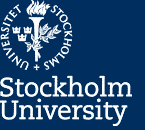
The overarching aim of algebraic geometry is to classify sets of points that represent geometric solutions to polynomial equations. Such a set of points could be lines, which are included in the point sets for solutions to first-degree polynomials, or circles, which build up the point sets for solutions to second-degree polynomials.
“Algebraic geometry has gained an interesting and central role in modern mathematics, with links to almost all branches of pure mathematics. Algebraic geometry is about thinking of ‘equation solution’ as something geometric. It has been found that the mindset can also be applied to very abstract forms of ‘equation solution’ which apparently may not even have anything to do with equations. This has enabled applications far beyond the kind of problem studied in algebraic geometry from ancient times until, say, the 1960s”, says Dan Petersen.
The two-dimensional Riemann surfaces, which the German mathematician Bernhard Riemann introduced in his doctoral thesis in 1851, play an important role in algebraic geometry, and also other areas of mathematics and physics. Moduli space is used for many applications of Riemann surfaces. Every point in a moduli space is equivalent to a class of specific geometric objects. In this way, moduli space is a geometric solution to the problem of classifying curves and other geometric objects.
“Often in mathematical research, one is motivated by a vague feeling that seemingly completely different phenomena must be linked in some way, or because there must be a general and systematic explanation of something that can be observed in simple cases that manages to count out. This is also the case in my project: the goal is to discover new connections, mindset and principles that explain and systematise what today is just a hint of loose threads.”
Moduli spaces have a very complicated structure and many questions about their properties remain unanswered. At the same time, they are an important and very active area of research investigated by Dan Petersen at the University of Copenhagen. As a Wallenberg Academy Fellow, he will work at Stockholm University.
“To me personally, the funding means that I can work focused and concentrated on my research without having to apply for funding or worry about funding in the next few years. In terms of research, the grant provides opportunities for employing young researchers and doctoral students, organizing conferences, and thus building a dynamic research group in Stockholm with international excellence,” says Dan Petersen.



